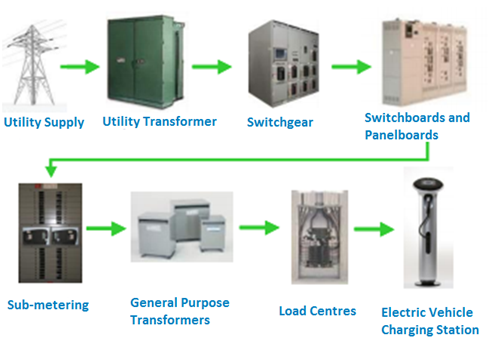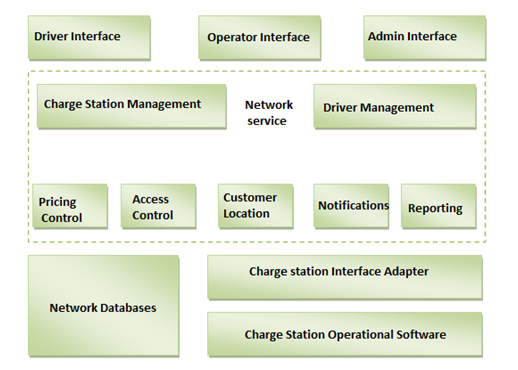Last updated: Feb 2020 by Narasimhan Santhanam
This pos![]() t is a part of EV Next’s EV Perspectives.
t is a part of EV Next’s EV Perspectives.
EV Next, a division of EAI, is a leading market intelligence & strategic consulting firm for the Indian e-mobility sector.
Get to know about 1000+ EV innovations from EVI2: Electric Vehicle Innovation Intelligence from EVNext
Net Zero by Narsi
Insights and interactions on climate action by Narasimhan Santhanam, Director - EAI
View full playlistIntroduction
The infrastructure element that provides the crucial link between an Electric Vehicle (EV) with a depleted battery and the electrical source that will recharge those batteries is the Electric Vehicle Supply Equipment or EVSE.
Electric Vehicle Supply Equipment (EVSE) Technology
EVSE delivers electrical energy from an electricity source to charge an EV battery. The EVSE communicates with the vehicle to ensure that an appropriate and safe flow of electricity is supplied. EVSE units are commonly referred to as charging stations.
Charge stations incorporate a number of assemblies and controllers.
- The power electronics assembly is the guts of a charge station. Functionally, it supplies the power to the EV’s onboard battery charger. Physically, it’s made up of wires, capacitors, transformers and other electronic parts.
- The charge controller serves as the “street smarts” of the charge station. It oversees basic charge functions, like turning a charger on/off, the metering of power usage and the storing of key bits of real-time and event data.
- The network controller provides the brains of the charge station. It enables the station to communicate with its network (via an on-board telecommunications device) so that managers can monitor it and review historical event data. It also controls user access to a charging station through a series of white (authorized) or black (unauthorized) lists.
- The charge station cable and connector plug into the target electric vehicle. These components provide the conduit for a charge to be delivered.
Classification of EVSE Components in Detail
- Physical components, such as internal electronics, controllers, cord, EV-compatible plug and telecommunications devices to share data and enable network connections.
- Software applications to manage the charging, billing, driver access, and administration of an EVSE program.
- On-going service to maintain physical and software components as well as provide customer service to both EVSE owners and their driver constituents.
Physical Components
Electric Vehicle Charging Station Flow Chart
All charging systems take AC power from the grid and convert it to DC power at a suitable voltage for charging the battery. In EV applications, Level 1 and Level 2 chargers are usually contained within the vehicle. In Level 3 charging systems however the charging functions are split between the charging station and the vehicle’s on board charger.
Level 1 and Level 2 Chargers
In low power, Level 1 and level 2, applications the power conditioning which includes the AC to DC conversion, the power control unit which delivers a variable DC voltage to the battery, and various filtering functions are all carried out within the charger and can be implemented at a relatively low cost.
Safety measures in the relatively low power Level 1 charging station are fairly simple and may be limited to a ground fault sensing device and a circuit interrupting device (CID) or “circuit breaker”, however the charger itself will usually incorporate more comprehensive safety measures in addition to the standard BMS functions including safety interlocks and isolators to prevent power being connected if there is a fault in the battery or the charger, as well as measures to prevent misuse, electric shocks and inadvertently driving away with the power cord still plugged in.
Level 1 charging works from a single phase AC power outlet and is suitable for private, domestic installations and these do not need authentication and billing.
If the charger is designed to work with public charging stations, as many Level 2 installations will be, it will most likely need to incorporate further intelligence to communicate with the charging station to verify that the user is authorised to draw power from that particular source and to allow it to bill the customer for the energy transferred unless charging is installed at home or as a free service in the workplace or shopping mall.
Level 2 charging stations may use either single phase or three phase AC power from the grid.
These self contained systems used for Levels 1 and 2 gives the charger the flexibility to connect to different AC charging sources.
Level 3 Chargers
Level 3 chargers have the same functionality as the Level 1 and 2 chargers but with the very high power levels used, the AC/DC conversion and the power conditioning and control circuits become very large and very expensive requiring heavy duty components. It makes sense to carry out these functions in the charging station rather than the charger so that the equipment can be shared by many users. This allows major cost and weight savings in the vehicle’s on board charger and with a bigger budget for the charging station, more efficient designs may be possible. In this case the BMS (battery management system) must communicate with the charging station to control the voltage and current delivered to the battery since power control is not implemented within the battery.
While putting some of the traditional charger functions into the charging station permits cost savings in the vehicle, the charging station will be correspondingly more expensive. Level 3 charging stations are currently much more expensive compared to Level 1 & Level 2 stations, though the costs are rapidly coming down. On top of the equipment cost itself, there is also the cost of providing access to the grid. Because of the high power requirements per station, these can’t just be connected to the grid anywhere, and in some cases, the electricity generating utility must provide a dedicated supply line capable of delivering the very high currents demanded.
On-street parking locations are usually owned and/or operated by city councils, transport authorities or the highways agency, and permission to install Charge Points must be sought from them.
 |
 |
| AC slow charging station | Charging station with both slow & fast charging |
Software applications
EVSE software is designed to manage and administer charge stations and their networks, and should not be confused with EV applications created to oversee the electric vehicle. The software functional elements are illustrated in Figure below. EVSE network software promotes the quick deployment and configuration of EV charge stations and facilitates a two-way flow of data between the charge station and its cloud-based network control centre.
This functionality allows operators to remotely configure, manage, and update charge station software; set and control driver access to charging; set pricing; manage billing; and run usage reports. Software applications also enable drivers to easily locate and reserve available charge stations. Software tools can also be configured to send notifications to operators (hardware/software issues) and EV drivers (“charge completed,” and “charge station available.”)
On-going operation and maintenance
Once EVSE systems have been deployed, the host (owners) may maintain and administer them with an in-house employee. Another option is to outsource their EVSE program management and maintenance to a third-party EV service company like EV Connect.
Such outsourcing may be contracted on a turnkey basis including:
- Setting up EV driver access controls
- Pricing consultation if applicable
- Customer support to site hosts and drivers
- Up-time monitoring
- Reporting
- Hardware and software maintenance and more
Know more on the EV charging ecosystem in India from: Components of EVSE | Bharath DC001 | Bharat AC001 | EVSE Growth Trends | Battery Swapping Growth Trends | EVSE Cost components | EVSE installation costs | Battery swapping in India | Indian EVSE Stakeholders | Charger Standards | Current Indian EVSE status | EVSE Challenges | EVSE during 2020-2030 |
![]() Know more on how EV Next can assist your business in your strategy for the e-mobility and electric vehicles sectors, Here
Know more on how EV Next can assist your business in your strategy for the e-mobility and electric vehicles sectors, Here
Wish to know everything about India’s EV market from one place? Check out the India EV Expert Guide, an 800 page comprehensive guide to the Indian EV market. Here
Get to know about 1000+ EV innovations from EVI2: Electric Vehicle Innovation Intelligence from EVNext
See also the blog posts
- EV Charging Station Installation & O&M Costs for India – Normal AC Charging, Fast DC Charging
- Cost Components for Setting Up an EV Charging Station – AC, DC Fast Charging – Hardware, Software, Permits…
- Components of EV Charging Station – Power Electronics, Charge Controller, Network Controller, Cables
Comprehensive Inputs on Indian EV Ecosystem
Check out the following sections for comprehensive inputs on Indian EV ecosystem (click on each section for more details)





 Our specialty focus areas include
Our specialty focus areas include








.gif)